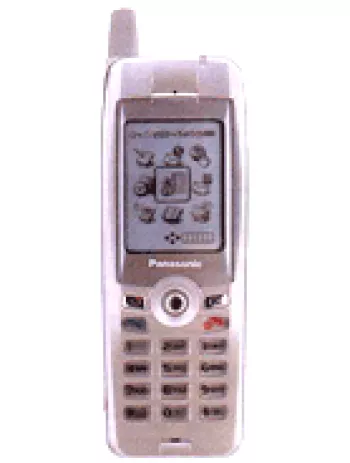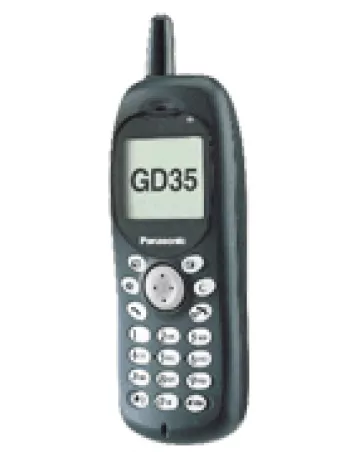
Overview of Panasonic SA6
The Panasonic SA6 is a classic feature phone that was announced in the first quarter of 2005. Though discontinued, it presents a fascinating glimpse into the evolution of mobile technology during that era. The device was equipped with features typical of the time, such as GSM technology and a modest camera, offering basic communication functionalities.
Network Capabilities
The Panasonic SA6 operated on the GSM network, providing support for 2G bands including GSM 900, 1800, and 1900. It featured GPRS Class 10, ensuring basic data connectivity. However, the lack of EDGE technology reflects the limited internet capabilities typical of feature phones of its time.
Design and Build
One of the appealing aspects of the Panasonic SA6 is its compact form factor. The device measured 96 x 47 x 25 mm, making it easily portable. Weighing in at 127 grams, it was substantial enough to feel robust without being cumbersome. The phone used a Mini-SIM card and was available in a vibrant red color, which added a touch of personality.
Display Features
The SA6 featured a TFT display capable of rendering 16 million colors, which was quite impressive for a feature phone. Although the exact size of the display is unspecified, it boasted a resolution of 240 x 320 pixels with a 4:3 ratio. Despite its compact size, the display managed to deliver vibrant and clear graphics for its category.
Photography Capabilities
Equipped with a single 1.3 MP main camera, the Panasonic SA6 provided basic photography solutions. It supported video recording at a QCIF resolution, which was sufficient for capturing simple video clips. While it lacks a selfie camera, this was common for phones of that period and did not deter its functionality as a communication device.
Memory and Storage
The device included 32MB of internal storage. Like many feature phones of its era, it did not support an external card slot, limiting its storage capacity for multimedia and other data. The phonebook could store up to 500 entries, and call records could log up to 50 dialed, 50 received, and 20 missed calls.
Sound and Entertainment
While it lacked a loudspeaker and a 3.5mm audio jack, the SA6 offered downloadable polyphonic and MP3 ringtones, adding a level of personalization. It included games like "Sonic the Hedgehog" and "Soccer," which catered to users looking for entertainment options.
Communication and Connectivity
Although the phone did not support WLAN, Bluetooth, or GPS, it did feature an infrared port for short-range communication. The proprietary USB interface facilitated data sharing. Without a built-in radio, the phone maintained a simple suite of communication features, nevertheless sufficient for basic daily use.
Operating System and Applications
The Panasonic SA6 operated as a feature phone, including support for messaging options like SMS, EMS, MMS, and Email. It came preloaded with a WAP 2.0/xHTML browser, suitable for very light web browsing. Additionally, it supported JAVA MIDP 2.0, allowing for the installation of basic apps and games.
Battery Life and Performance
Battery performance was one of the strengths of the SA6. The removable Li-Ion 1620 mAh battery provided a standby time ranging between 300 and 740 hours, and a talk time of 4 to 12 hours. These figures indicate a respectable battery life that could easily last through a day or more of typical usage without needing a recharge.
Conclusion
In summary, the Panasonic SA6 displayed a blend of fundamental communication tools with a touch of entertainment, reflective of mid-2000s design. Despite its limitations by today's standards, it provided an effective and reliable user experience for its time. The distinctive red color and compact build added to its appeal for users seeking a straightforward mobile phone during its time of release.
Key Features of Panasonic SA6
- GSM Technology
- Compact Dimensions: 96 x 47 x 25 mm
- TFT Display with 16 Million Colors
- Resolution: 240 x 320 pixels
- 1.3 MP Main Camera
- Infrared Port
- Messaging Support: SMS, EMS, MMS, Email
- Java Support (MIDP 2.0)
- Removable Li-Ion 1620 mAh Battery
- Stand-by Time: Up to 740 hours
- Talk Time: Up to 12 hours
- Pre-Installed Games: Sonic the Hedgehog, Soccer
Panasonic SA6 Main Disadvantages
- Discontinued status; the device is no longer supported or available for purchase.
- Limited network connectivity; lacks EDGE technology for faster data speeds.
- Heavier weight at 127 g for a device of its time.
- No expandable memory card slot; limited to 32MB of internal storage.
- Basic main camera at 1.3 MP with low-resolution video capability (QCIF).
- No selfie camera available.
- Absent loudspeaker; audio experience is compromised.
- Lacks a 3.5mm headphone jack, limiting audio accessory options.
- No support for Wi-Fi and Bluetooth connectivity, limiting data transfer options.
- No GPS functionality included.
- Requires a proprietary USB connector, which could be less convenient.
- No FM radio feature available.

View Also
More Phones
All Rights Reserved +14266 Phones © Mobilawy 2025

























